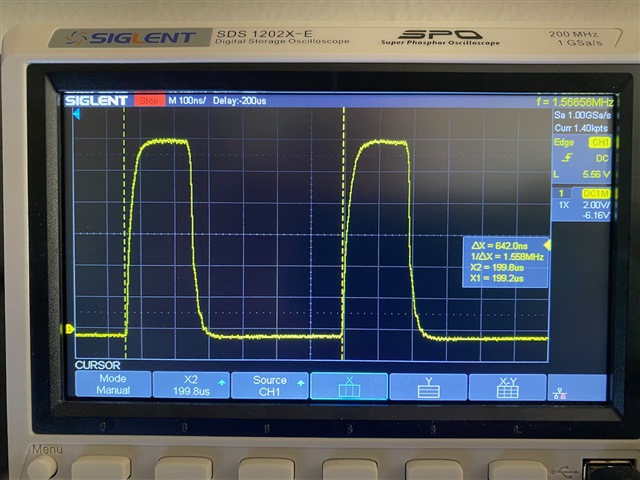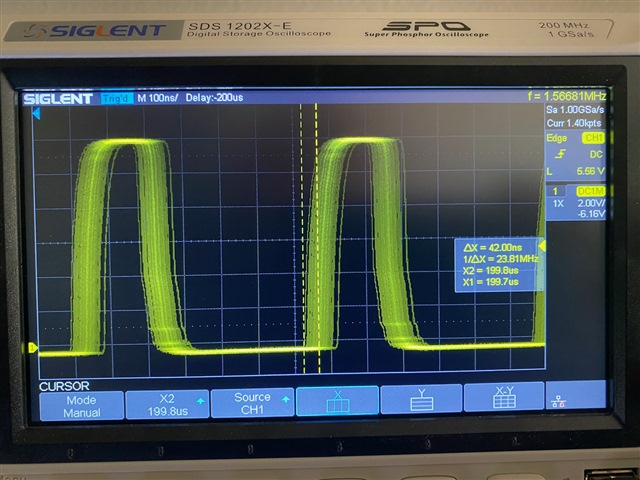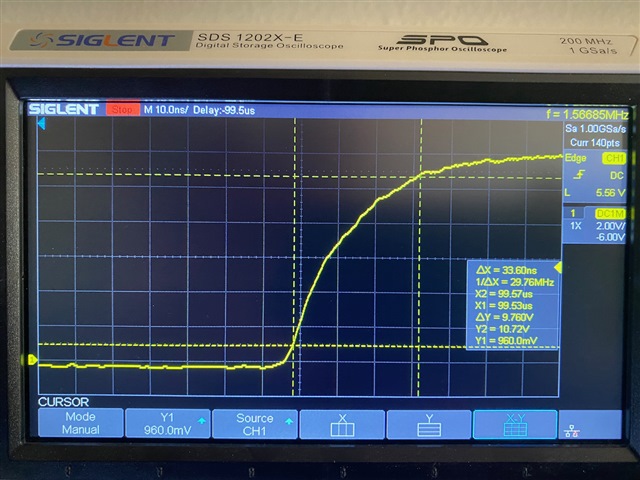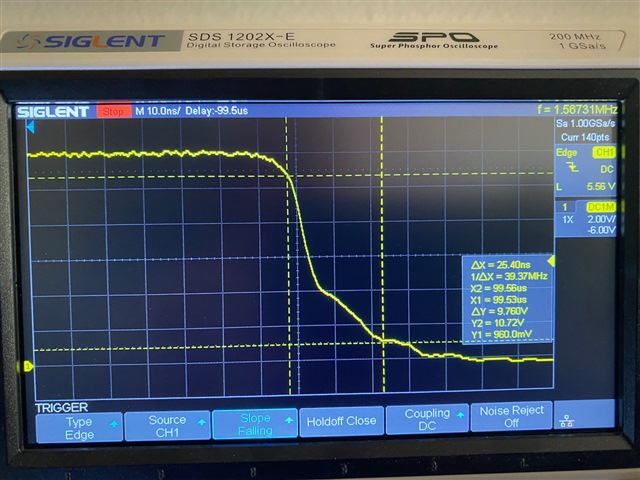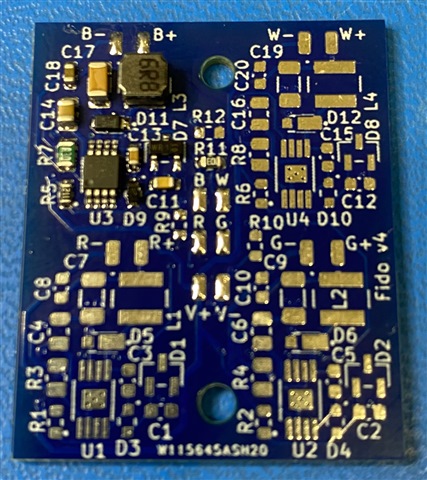Other Parts Discussed in Thread: TPS92200, LM3405
I'm using the LM3405A to drive a single color LED (Vf=2.5, 3.1, or 3.3v) at Iout = 0.7 - 1.0A, with Vin=12v. Based on initial testing, I'm only achieving about 70% efficiency rather than the ~80% efficiency indicated by the data sheet Figs. 1 - 3. I suspect this is caused by high switching losses (Psw) due to slow rise and fall times measured at the SW pin (Trise, Tfall). I measure Trise = 33ns and Tfall = 28ns, considerably higher than the values shown in Table 2. What could be causing this?
I'm currently using an external source (Vext = 5v) to generate Vboost, but in the final design I plan to use the alternative method in Table 14 (Zener diode in shunt configuration). Here are some of there relevant component specs:
Boost capacitor C3: 0.01µF MLCC, 25v, X7R, 10%, 0603 package.
Boost diode D2: Schottky diode, Vf=0.35v, 30v, 100mA, 0603 pkg
Inductor: 6.8µH, 1.6A, DCR=90mΩ, 4.0 x 4.0mm
Catch diode D1: Schottky, Vf=0.44v, 30v, 2A
I followed the PCB layout recommendations as closely as possible.
It just occurred to me that a contributor could be the relatively high DC resistance of the inductor (90mΩ) compared to the physically-larger inductors listed in the BOM (Table 3) and used in the LM3405A Demo Board. I hadn't focused on this because it seems like the LM3405A chip was getting much hotter than the inductor. I'm seeing a chip surface delta-T of 25C with no heat sink or airflow with Iout=0.7A.
Thanks!


